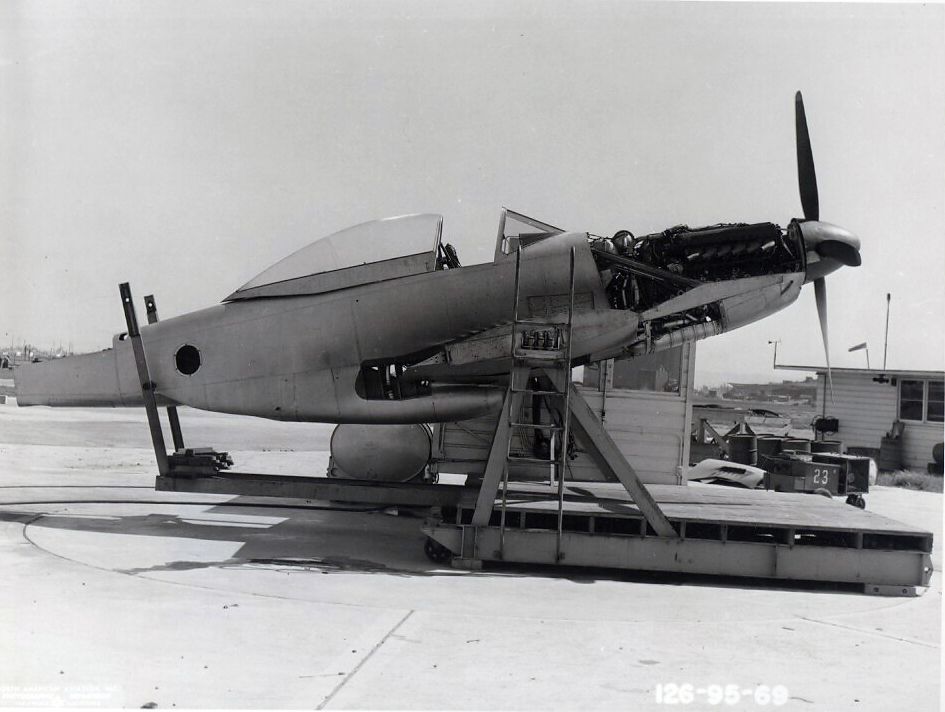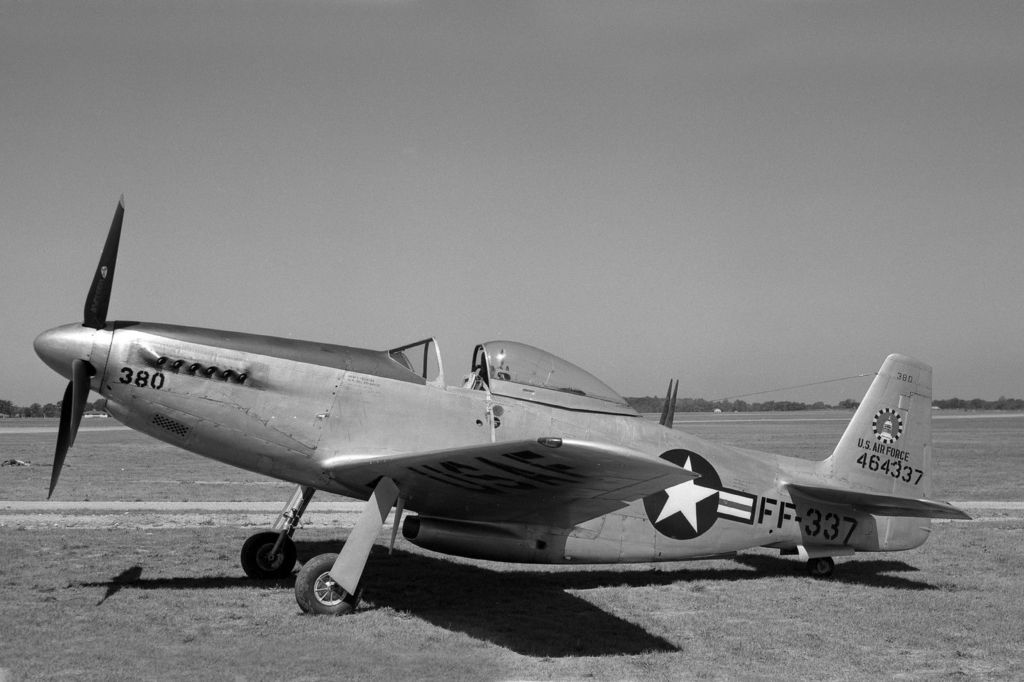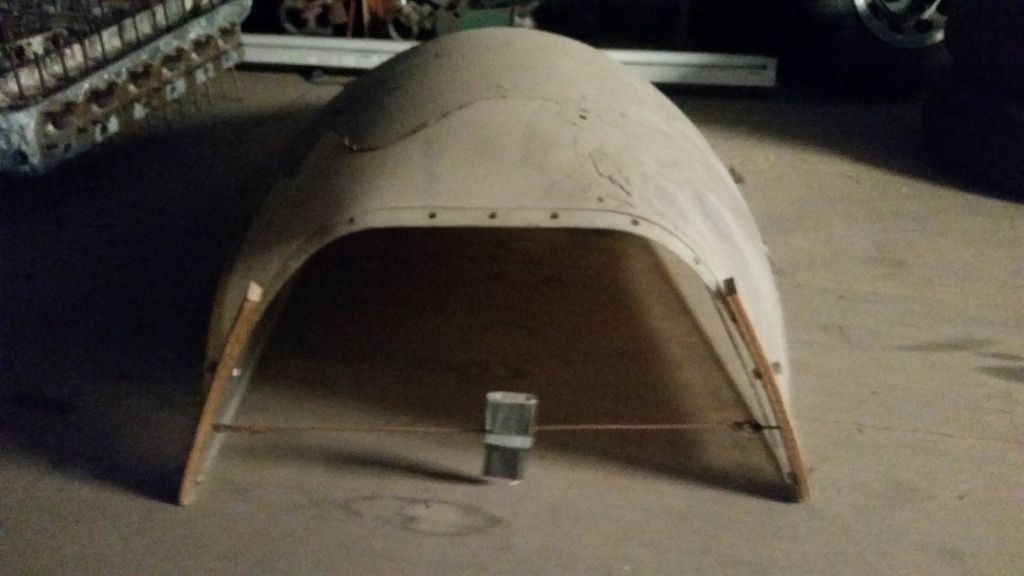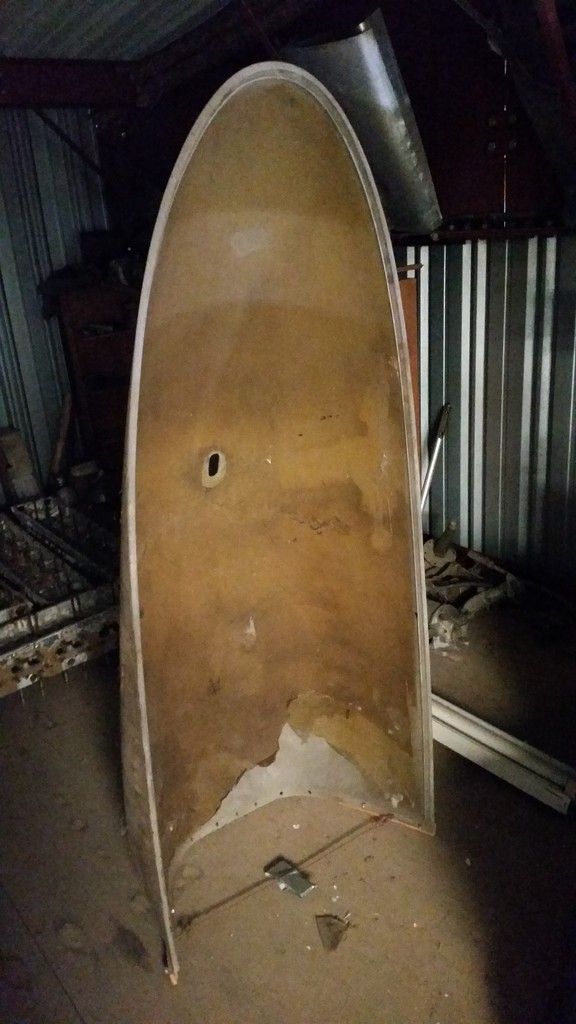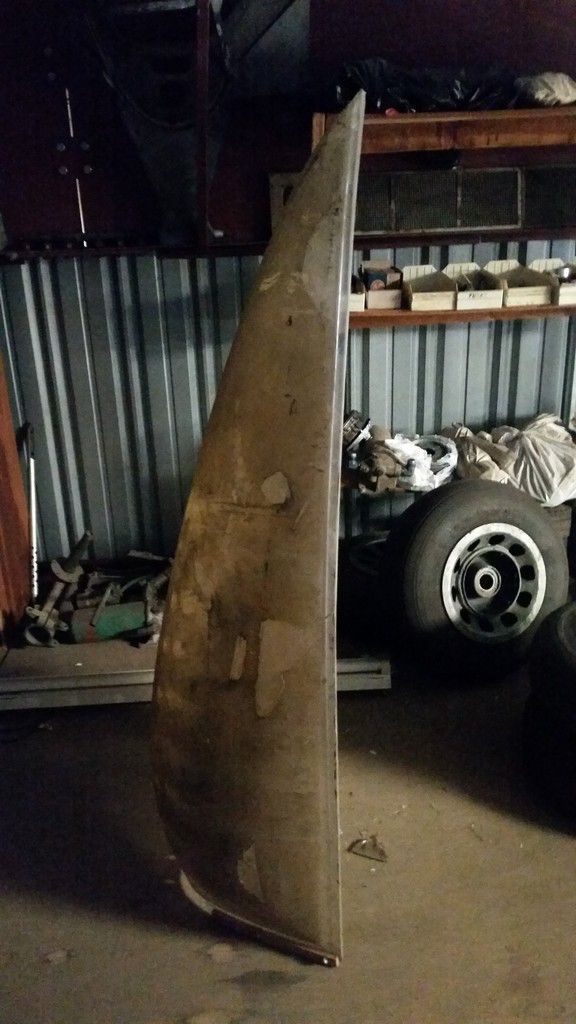P-51D canopy variations?
Thu Mar 16, 2017 2:47 pm
Reading through Michael O'Leary's book "Building the P-51 Mustang" I came across a mention that there were "...at least five variations of the bubble shape" on the bubble canopy equipped P-51s.
I'm familiar with the more "streamlined" one vs the one with more of a bump near the back, and I guess there's the TF-51 canopy, but what about the other two variations?
Anyone care to give us a history of this or point me to a resource? Google comes up dry in my searches...
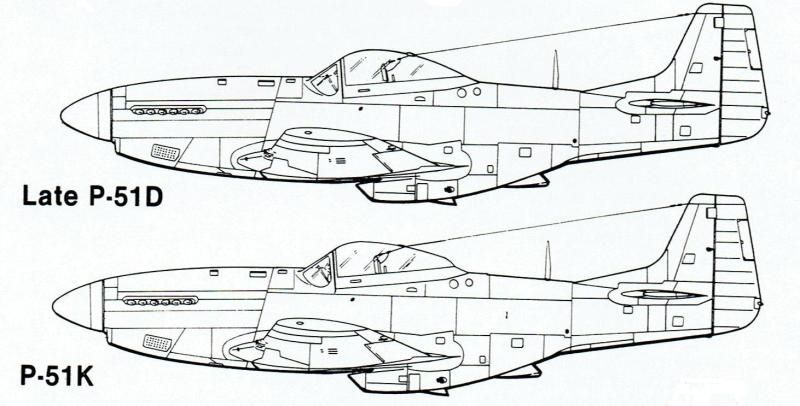
I'm familiar with the more "streamlined" one vs the one with more of a bump near the back, and I guess there's the TF-51 canopy, but what about the other two variations?
Anyone care to give us a history of this or point me to a resource? Google comes up dry in my searches...

Re: P-51D canopy variations?
Thu Mar 16, 2017 4:32 pm
John Terrell should be able to give you a very detailed answer on this question.
Hopefully when he pops in next, he'll see this thread and give you the answer!
What I will say is if you can find some period pictures of D-5s, take a close look at the canopy shape (specifically were the highest point is located), and compare it to that of the D-10 onward.
Cheers
Paul
Hopefully when he pops in next, he'll see this thread and give you the answer!
What I will say is if you can find some period pictures of D-5s, take a close look at the canopy shape (specifically were the highest point is located), and compare it to that of the D-10 onward.
Cheers
Paul
Re: P-51D canopy variations?
Thu Mar 16, 2017 5:27 pm
Mustang researcher/profile artist Charles Neely is an expert on the subject, and is the one who I believe the Michael O'Leary book has taken that information from, as Mr. Neely organized the various WWII-era D/K canopies into five distinct shapes based on original WWII photos/NAA drawings.
As Paul mentions, the P-51D-5-NA production (first production D's) had quite a distinct plexi bubble, known as the "-2", which was only used during that production period. On the -2, the tallest portion was mid-way through the canopy, and actually behind the pilot. This first plexi bubble was also made using a mould, with the sides of the canopy bubble being flat/non-bulged.
By very late P-51D-5-NA production and into P-51D-10-NA production, NAA began making blown canopies instead, known as the "-6". The improvements over the previous "molded" -2 canopies were that the tallest portion of the canopy was now over the pilot's head, and the sides of the canopy were bulged outward to provide greater visibility for the pilot (pilots could now lean out a bit to see more in a downward direction). Later development/improvement of the -6 canopy seems to have continued, which decreased the height of the canopy a bit in the upper forward bulge of the canopy, and added a bit more bulging at the spine and back of the canopy (perhaps to decrease any amount of distortion that had been present in the earlier iteration of the -6).
The "Dallas" canopies are said to be versions of the Inglewood -6 canopy, but done by a different contractor, leading to the differences in shape along the spine and tail-end of the canopy. There is a common legend, which may be founded in truth, that this was actually an intentional development by the NAA Dallas team to improve the design/further rectify areas of distortion. There are two distinct versions of the "Dallas" canopy known to have been used during WWII (as illustrated below).
Here is a general run-down:
These first two photos show the Inglewood "-2" canopy - as only fitted to (the majority of) P-51D-5-NA's - this molded canopy featured flat sides and the tallest portion was in the middle of the canopy (behind the pilot):

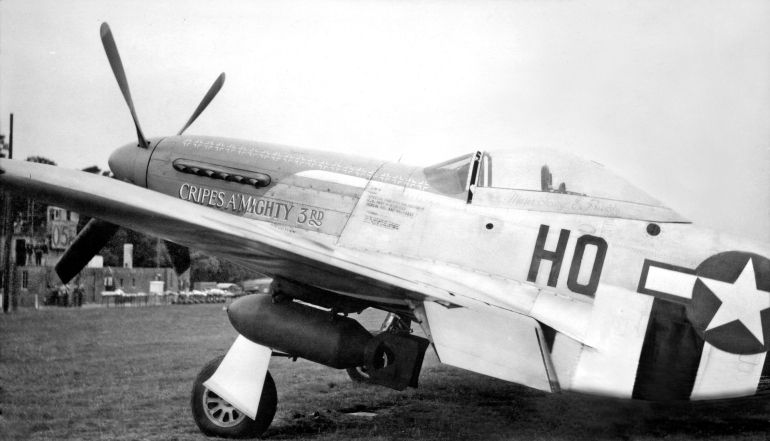
The first form of the Inglewood "-6" canopy - as fitted to the last several P-51D-5-NA's, P-51D-10-NA's, and P-51D-15-NA's (perhaps some P-51D-20-NA's too) - free-blown, with bulged sides and the tallest portion over the pilot - very little to no bulging at the rear of the canopy (almost a straight line back to the tail-end of the canopy):
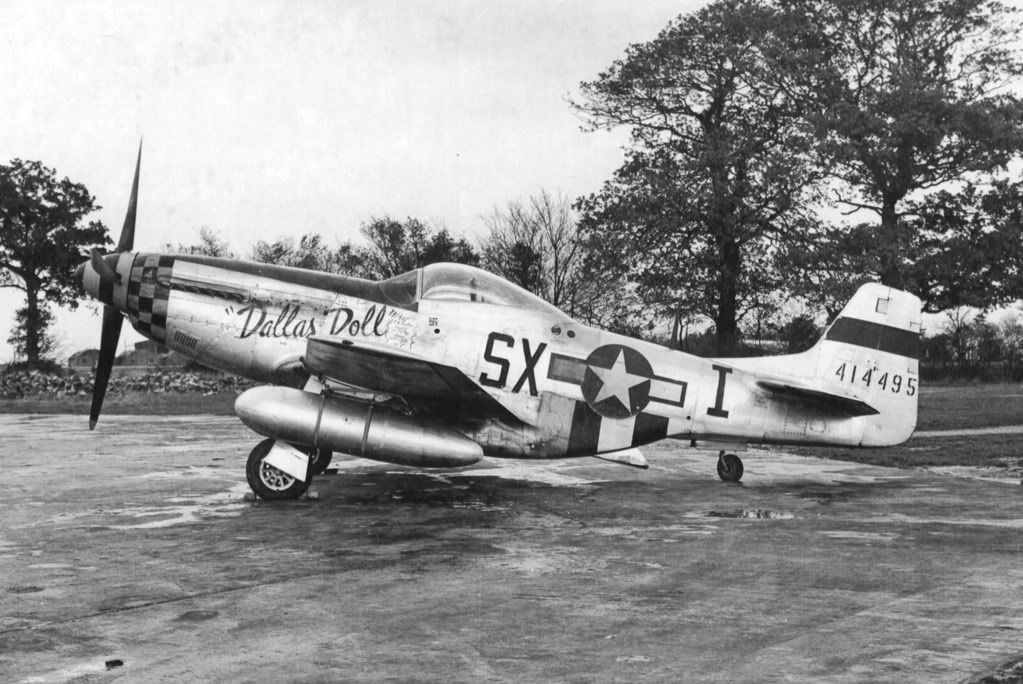
Both of the above types can be seen in contrast in this photo of an early and a very late P-51D-5-NA, both with their factory-installed canopies:
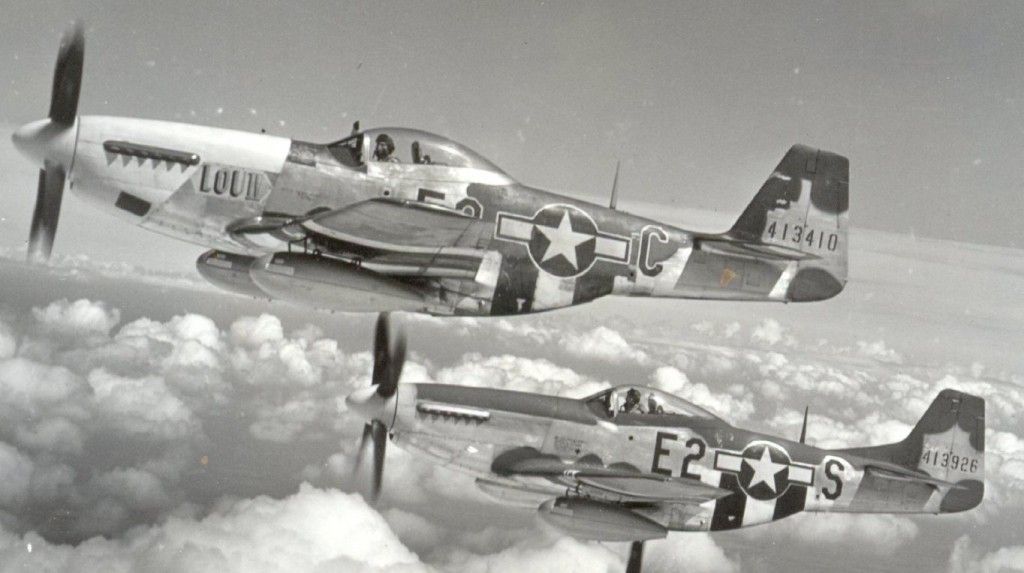
The later form of the Inglewood "-6" canopy, as used on mid-late Inglewood P-51D production (not so much height in the upper forward bulge of the canopy, and a bit more bulging at the back of the canopy):
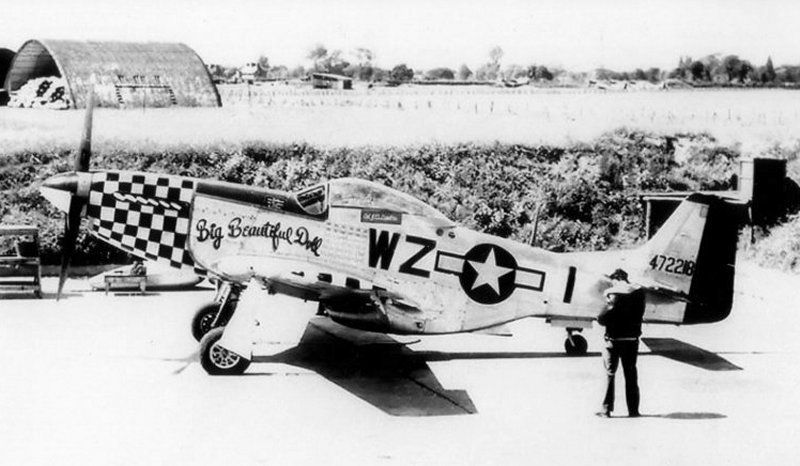
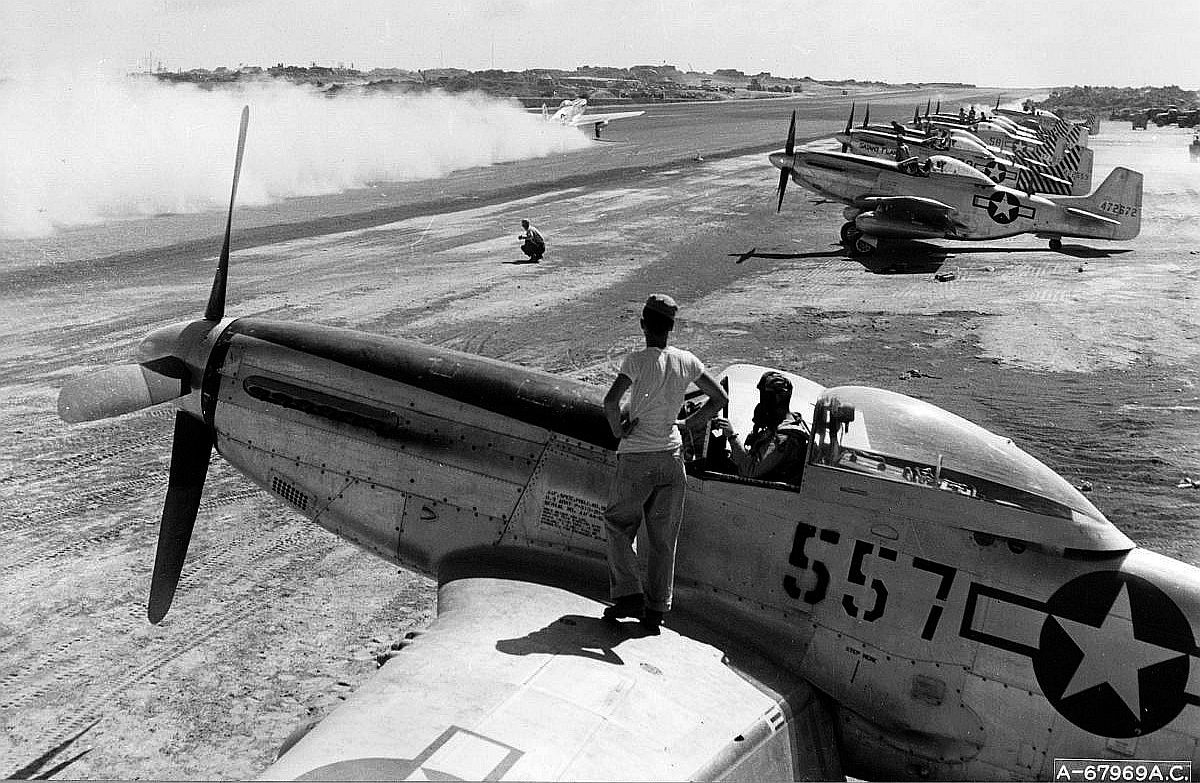
The following few photos shows the prototypical "Dallas" type canopies, which were a variation of the Inglewood "-6" canopy as produced by the Dallas sub-contractor (generally having a flatter/straighter back line):
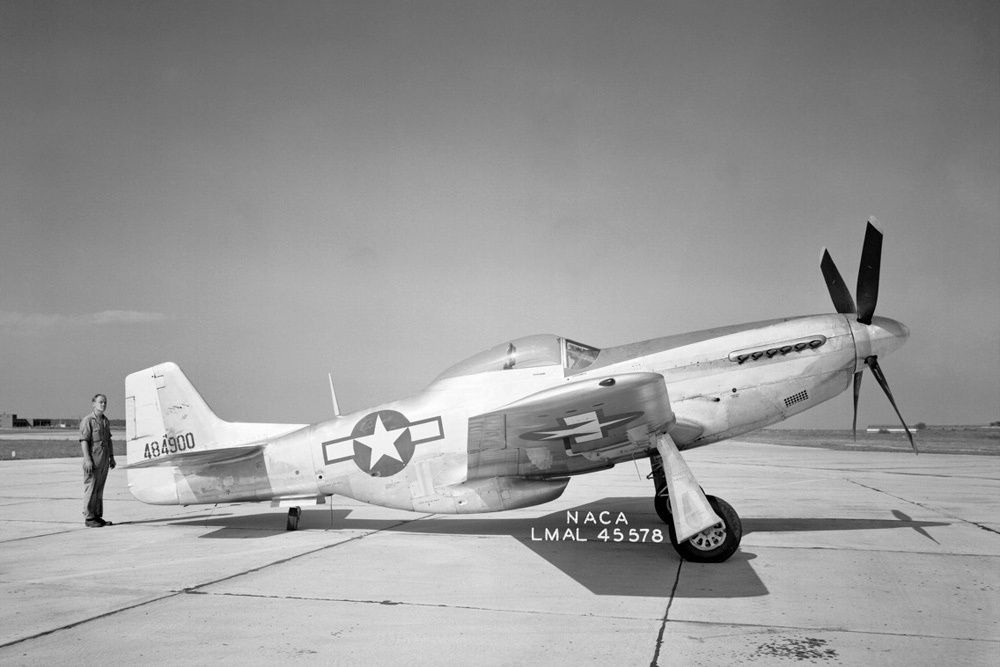
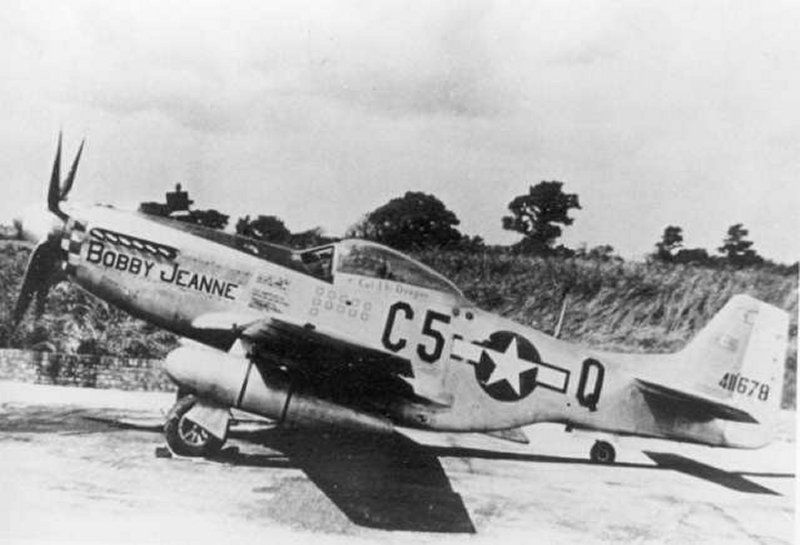
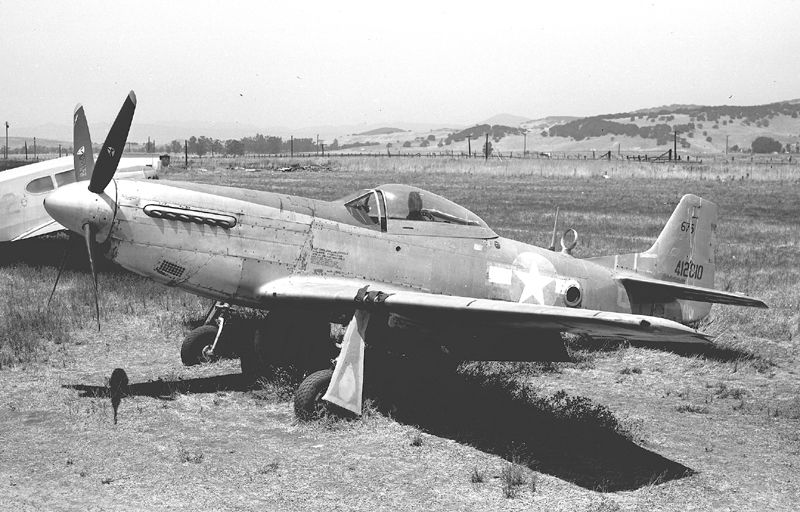
This, however, was another of the Dallas produced canopies - note how much larger/ballooned it is in the rear section (also note that these are all from a section of P-51K-5-NT production, and all very near to each other in production):
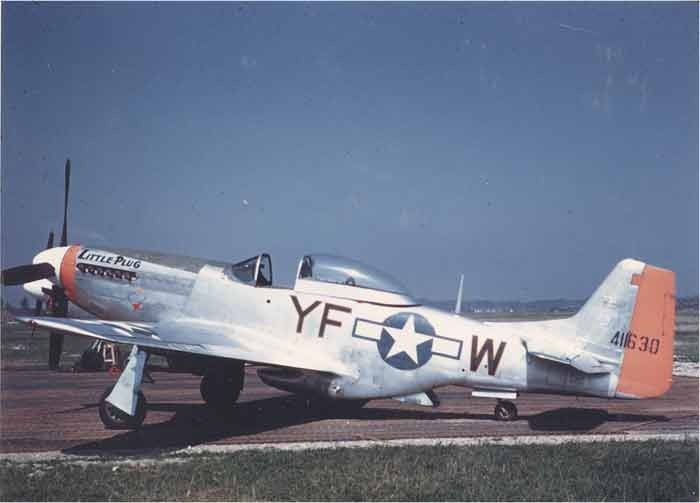
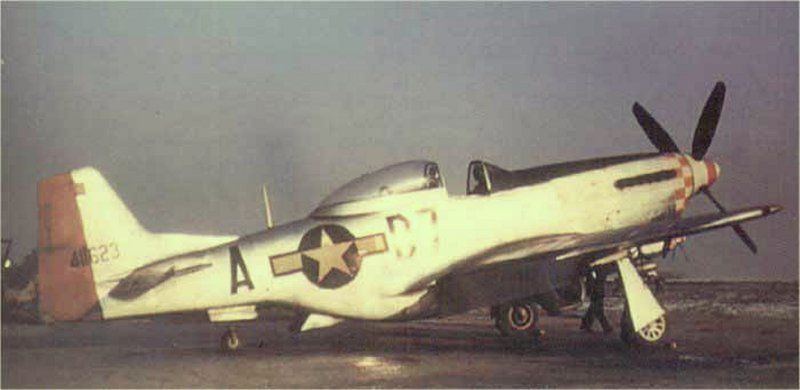
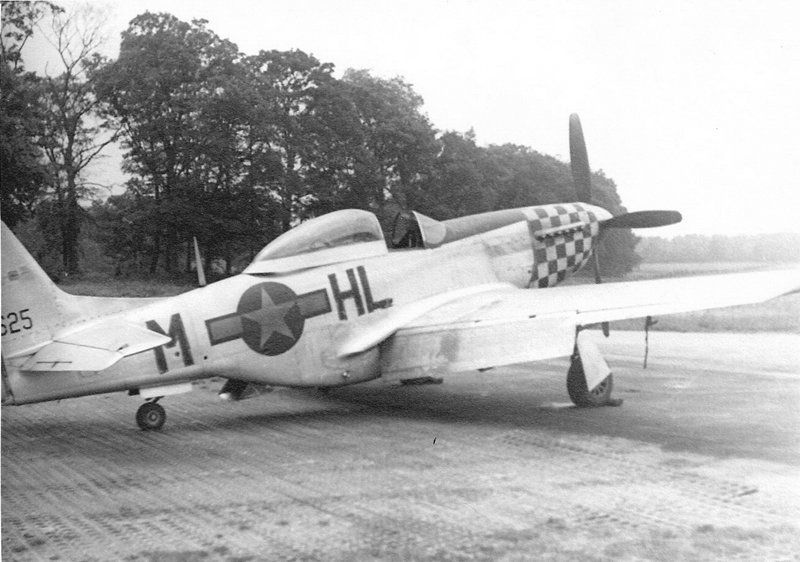

As Paul mentions, the P-51D-5-NA production (first production D's) had quite a distinct plexi bubble, known as the "-2", which was only used during that production period. On the -2, the tallest portion was mid-way through the canopy, and actually behind the pilot. This first plexi bubble was also made using a mould, with the sides of the canopy bubble being flat/non-bulged.
By very late P-51D-5-NA production and into P-51D-10-NA production, NAA began making blown canopies instead, known as the "-6". The improvements over the previous "molded" -2 canopies were that the tallest portion of the canopy was now over the pilot's head, and the sides of the canopy were bulged outward to provide greater visibility for the pilot (pilots could now lean out a bit to see more in a downward direction). Later development/improvement of the -6 canopy seems to have continued, which decreased the height of the canopy a bit in the upper forward bulge of the canopy, and added a bit more bulging at the spine and back of the canopy (perhaps to decrease any amount of distortion that had been present in the earlier iteration of the -6).
The "Dallas" canopies are said to be versions of the Inglewood -6 canopy, but done by a different contractor, leading to the differences in shape along the spine and tail-end of the canopy. There is a common legend, which may be founded in truth, that this was actually an intentional development by the NAA Dallas team to improve the design/further rectify areas of distortion. There are two distinct versions of the "Dallas" canopy known to have been used during WWII (as illustrated below).
Here is a general run-down:
These first two photos show the Inglewood "-2" canopy - as only fitted to (the majority of) P-51D-5-NA's - this molded canopy featured flat sides and the tallest portion was in the middle of the canopy (behind the pilot):


The first form of the Inglewood "-6" canopy - as fitted to the last several P-51D-5-NA's, P-51D-10-NA's, and P-51D-15-NA's (perhaps some P-51D-20-NA's too) - free-blown, with bulged sides and the tallest portion over the pilot - very little to no bulging at the rear of the canopy (almost a straight line back to the tail-end of the canopy):

Both of the above types can be seen in contrast in this photo of an early and a very late P-51D-5-NA, both with their factory-installed canopies:

The later form of the Inglewood "-6" canopy, as used on mid-late Inglewood P-51D production (not so much height in the upper forward bulge of the canopy, and a bit more bulging at the back of the canopy):


The following few photos shows the prototypical "Dallas" type canopies, which were a variation of the Inglewood "-6" canopy as produced by the Dallas sub-contractor (generally having a flatter/straighter back line):



This, however, was another of the Dallas produced canopies - note how much larger/ballooned it is in the rear section (also note that these are all from a section of P-51K-5-NT production, and all very near to each other in production):




Last edited by JohnTerrell on Fri Mar 17, 2017 9:42 am, edited 2 times in total.
Re: P-51D canopy variations?
Thu Mar 16, 2017 7:03 pm
"Google comes up dry in my searches..."
You don't need no stinking Google, you have WIX....
Phil
You don't need no stinking Google, you have WIX....
Phil
Last edited by phil65 on Thu Mar 16, 2017 9:06 pm, edited 1 time in total.
Re: P-51D canopy variations?
Thu Mar 16, 2017 8:18 pm
Fannn-tastic, this is something I've often wondered about! A couple questions, if I may?
1. It's easy to visualize how molding a canopy works. But I've never had a handle on the 'blown' canopy process...? So I Googled it and found this: http://www.autospeed.com/cms/article.ht ... s&A=113285 . Still not sure I understand how the pre-determined profile shape is arrived at.
2: Assuming the blown process makes a more "optically correct" canopy than molding, is this the chief advantage of the two methods?
3. In contemporary restorations, I assume new canopies are made, rather than drawn from vast stockpiles of OEM parts. If so, do they tend to adhere strictly to original specs, or does the shape become something like paint jobs: more or less interpretation? I have no idea how to Google this question...
Thank you, gentlemen!
1. It's easy to visualize how molding a canopy works. But I've never had a handle on the 'blown' canopy process...? So I Googled it and found this: http://www.autospeed.com/cms/article.ht ... s&A=113285 . Still not sure I understand how the pre-determined profile shape is arrived at.
2: Assuming the blown process makes a more "optically correct" canopy than molding, is this the chief advantage of the two methods?
3. In contemporary restorations, I assume new canopies are made, rather than drawn from vast stockpiles of OEM parts. If so, do they tend to adhere strictly to original specs, or does the shape become something like paint jobs: more or less interpretation? I have no idea how to Google this question...
Thank you, gentlemen!
Re: P-51D canopy variations?
Mon Mar 20, 2017 8:19 am
Wow!! John Terrell to the rescue! Thanks John...very helpful.
Aesthetically, I like the second one best. In fact, I've always had a thing for the aircraft in the background here. Since I was a little kid.

@Phil - True, but you can get yourself in trouble asking "obvious" questions without checking Google first. Plus, I like to research myself if I can.
Plus, I like to research myself if I can.
I do wonder about Kurt's questions...#3 in particular...
Aesthetically, I like the second one best. In fact, I've always had a thing for the aircraft in the background here. Since I was a little kid.

@Phil - True, but you can get yourself in trouble asking "obvious" questions without checking Google first.
I do wonder about Kurt's questions...#3 in particular...
Re: P-51D canopy variations?
Mon Mar 20, 2017 9:29 am
The photo of 484900 shows a stunningly beautiful Mustang. I love the plain natural finish! Very interesting discussion of the canopy styles.
Re: P-51D canopy variations?
Tue Mar 28, 2017 7:13 pm
Just a bump to see if anyone can answer Kurtis' questions....
Re: P-51D canopy variations?
Tue Mar 28, 2017 8:45 pm
I'll try to answer Pogo's questions to the best of my knowledge, working backwards (though I'm no expert on the subject)...
3. In contemporary restorations, I assume new canopies are made, rather than drawn from vast stockpiles of OEM parts. If so, do they tend to adhere strictly to original specs, or does the shape become something like paint jobs: more or less interpretation? I have no idea how to Google this question...
Yes, in contemporary restorations, many of the canopies/Plexiglas parts being used today are made new. Aero Trader, the first company I think of when it comes to this subject, has quite literally had a side of its business just dedicated to producing canopies for warbirds, including Mustangs, Sea Furies, Corsairs, P-40's, Yaks, SBD's, etc., as well as windscreen and nose glazing panels and wingtip and landing light lenses for B-25's, A-26's, TBM's. etc. (not to mention turret domes). Also, yes, there have been more variations in D-model type Mustang canopy shapes in the years since WWII with all of the post-factory/independently made canopies (some sleeker/lower profile/less bulging, where as others seem to be more bulbous than original, such as the canopy that was fitted to N1451D), however for the most part the new canopies used in restorations today do seem quite accurate to original production "shapes". (Though it too makes me wonder about the Inglewood-style canopies seen fitted to Mustangs today, and the Dallas-style canopies fitted to Mustangs today - if both styles are being made new today(?), I wonder how the production specs being used today differ to reach the different end results?)
2: Assuming the blown process makes a more "optically correct" canopy than molding, is this the chief advantage of the two methods?
Yes, and the biggest reason why is because in the free blowing process the Plexiglas never touches the tool, thus preventing any surface imperfections that you're otherwise always likely to get with vacuum forming or drape forming. In those processes, in which the Plexiglas is laid into a mould or draped over a plug, it will pick up imperfections anywhere where the surface of the mould/plug isn't perfectly smooth - any bit of dirt on the tool will cause little tiny depressions in the Plexi, requiring a lot of sanding/polishing to fix.
1. It's easy to visualize how molding a canopy works. But I've never had a handle on the 'blown' canopy process... Still not sure I understand how the pre-determined profile shape is arrived at.
In the case of making Mustang and Sea Fury canopies (the free blowing process), from what I've read of the Aero Trader operation, a frame is built to the same shape of the base of the canopy. Heated Plexiglas is put into this tool and then a shaped male plug is inserted (between the frame and the plug, these must provide the moulded "lip" around the base and forward edge of the canopy, which seats within the canopy frame). At this point the whole thing is sealed so that air can be forced in to blow the heated Plexiglas into the desired "correct" shape. Since there isn't an actual mould of the full canopy, the shape of the canopy bubble itself must simply come from a mixture of the shape of the canopy base and the amount of air pressure and locations of where the air pressure emits within the tool. Of course the whole thing is described as a black art, with plenty of trial and error at the start, before getting accustom to the process/achieve proper results.
3. In contemporary restorations, I assume new canopies are made, rather than drawn from vast stockpiles of OEM parts. If so, do they tend to adhere strictly to original specs, or does the shape become something like paint jobs: more or less interpretation? I have no idea how to Google this question...
Yes, in contemporary restorations, many of the canopies/Plexiglas parts being used today are made new. Aero Trader, the first company I think of when it comes to this subject, has quite literally had a side of its business just dedicated to producing canopies for warbirds, including Mustangs, Sea Furies, Corsairs, P-40's, Yaks, SBD's, etc., as well as windscreen and nose glazing panels and wingtip and landing light lenses for B-25's, A-26's, TBM's. etc. (not to mention turret domes). Also, yes, there have been more variations in D-model type Mustang canopy shapes in the years since WWII with all of the post-factory/independently made canopies (some sleeker/lower profile/less bulging, where as others seem to be more bulbous than original, such as the canopy that was fitted to N1451D), however for the most part the new canopies used in restorations today do seem quite accurate to original production "shapes". (Though it too makes me wonder about the Inglewood-style canopies seen fitted to Mustangs today, and the Dallas-style canopies fitted to Mustangs today - if both styles are being made new today(?), I wonder how the production specs being used today differ to reach the different end results?)
2: Assuming the blown process makes a more "optically correct" canopy than molding, is this the chief advantage of the two methods?
Yes, and the biggest reason why is because in the free blowing process the Plexiglas never touches the tool, thus preventing any surface imperfections that you're otherwise always likely to get with vacuum forming or drape forming. In those processes, in which the Plexiglas is laid into a mould or draped over a plug, it will pick up imperfections anywhere where the surface of the mould/plug isn't perfectly smooth - any bit of dirt on the tool will cause little tiny depressions in the Plexi, requiring a lot of sanding/polishing to fix.
1. It's easy to visualize how molding a canopy works. But I've never had a handle on the 'blown' canopy process... Still not sure I understand how the pre-determined profile shape is arrived at.
In the case of making Mustang and Sea Fury canopies (the free blowing process), from what I've read of the Aero Trader operation, a frame is built to the same shape of the base of the canopy. Heated Plexiglas is put into this tool and then a shaped male plug is inserted (between the frame and the plug, these must provide the moulded "lip" around the base and forward edge of the canopy, which seats within the canopy frame). At this point the whole thing is sealed so that air can be forced in to blow the heated Plexiglas into the desired "correct" shape. Since there isn't an actual mould of the full canopy, the shape of the canopy bubble itself must simply come from a mixture of the shape of the canopy base and the amount of air pressure and locations of where the air pressure emits within the tool. Of course the whole thing is described as a black art, with plenty of trial and error at the start, before getting accustom to the process/achieve proper results.
Last edited by JohnTerrell on Tue Mar 28, 2017 9:01 pm, edited 4 times in total.
Re: P-51D canopy variations?
Wed Mar 29, 2017 9:05 am
Okay, say you're having a Mustang restored by a well known shop.
Would you tell them that you'd like an Inglewood "2" canopy in much the same way you'd tell them what paint scheme you want or avionics fitted?
Then would they go to a supplier who offers all styles?
Somehow with all the variations, I assumed there was no modern consensus and you'd take what you got.
Not that anyone has asked, but I rather like the "2" shape with its constant radii as seen on Lou IV above as opposed to the pointed (almost conical) later shape as seen in the later D above.
Any aerodynamic or drag differences?
This talk off canopy shapes is like deciding what color you'd have a Ferrari or what interior arrangement you'd have in your BBJ.
Would you tell them that you'd like an Inglewood "2" canopy in much the same way you'd tell them what paint scheme you want or avionics fitted?
Then would they go to a supplier who offers all styles?
Somehow with all the variations, I assumed there was no modern consensus and you'd take what you got.
Not that anyone has asked, but I rather like the "2" shape with its constant radii as seen on Lou IV above as opposed to the pointed (almost conical) later shape as seen in the later D above.
Any aerodynamic or drag differences?
This talk off canopy shapes is like deciding what color you'd have a Ferrari or what interior arrangement you'd have in your BBJ.
Re: P-51D canopy variations?
Mon Apr 03, 2017 10:39 pm

Re: P-51D canopy variations?
Tue Apr 04, 2017 11:25 am
That canopy has been on several different racing Mustangs...and everyone equally hated flying with it.
Re: P-51D canopy variations?
Tue Apr 04, 2017 11:16 pm
But it looked soooooo sexy.
Re: P-51D canopy variations?
Mon Apr 10, 2017 5:17 pm
